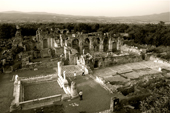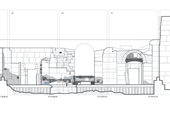Masons at Work
Allyson McDavid
Institute of Fine Arts, New York University

Allyson McDavid
Institute of Fine Arts, New York University
Renovation and Redesign in Late Antiquity: The Hadrianic Baths of Aphrodisias
Dedicated in the early second century AD, the Hadrianic Baths of Aphrodisias continued in use for five hundred years. Prior to the city's abandonment in the seventh century, the Baths' impressive lifespan was marked by campaigns of architectural and sculptural renovation that enabled the complex to thrive as a cultural center for public enjoyment. This paper presents results of recent investigations into the modification of the Baths, evident through these Late Antique repairs. While inscriptional evidence lauds the patronage of several euergetes between the fourth and sixth centuries, it is the masons' work that endures as testament to the Baths' social resonance within the city. Charged to build within an existing monumental frame, Late Antique masons demonstrated pragmatic ingenuity in their hybrid structural solutions to redirect circulation through thick, load-bearing walls. They formulated technological refinements to transmit heat more efficiently, one of several alterations signifying the economic issues that would have framed the scope of any contracted work. The adoption of brick masonry into the primarily limestone ashlar and opus caementicium superstructure, redeployment of marble revetment initially used in the second century or from early Christian contexts, and displacement of wall revetment for plaster finishes, all characterize discrete craftsmen's trades and their interconnected role in maintaining the kallos of their city. The varied artisanal skills engaged to maintain the building during Late Antiquity reflect Aphrodisian society's unceasing interest in bathing during an era of religious and socioeconomic flux, and an enduring civic pride.


